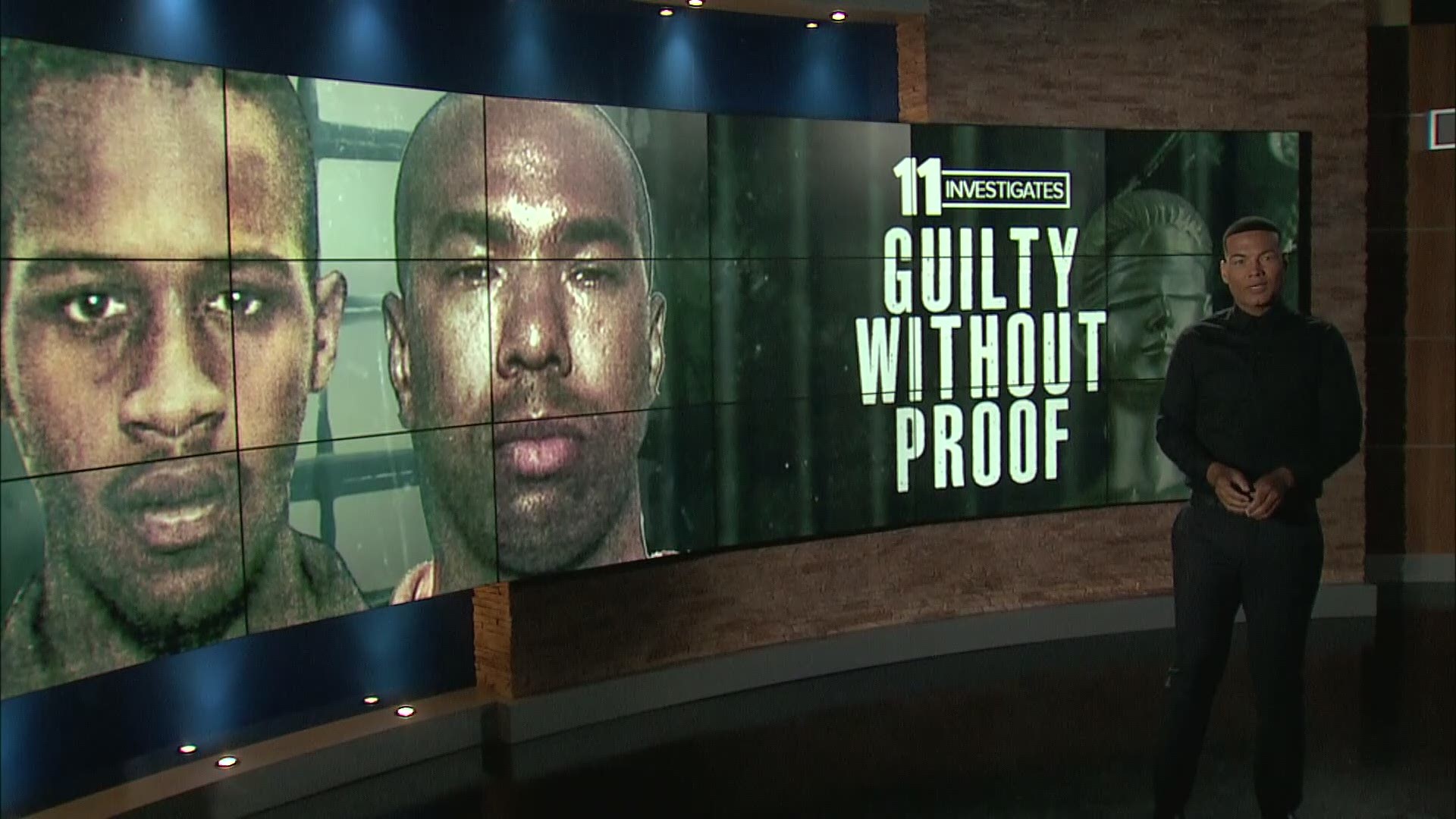Guilty Without Proof ... still.
One year later, a new trial is being sought in the 20-year-old murder case, for which 2 men remain behind bars and continue to assert their innocence.
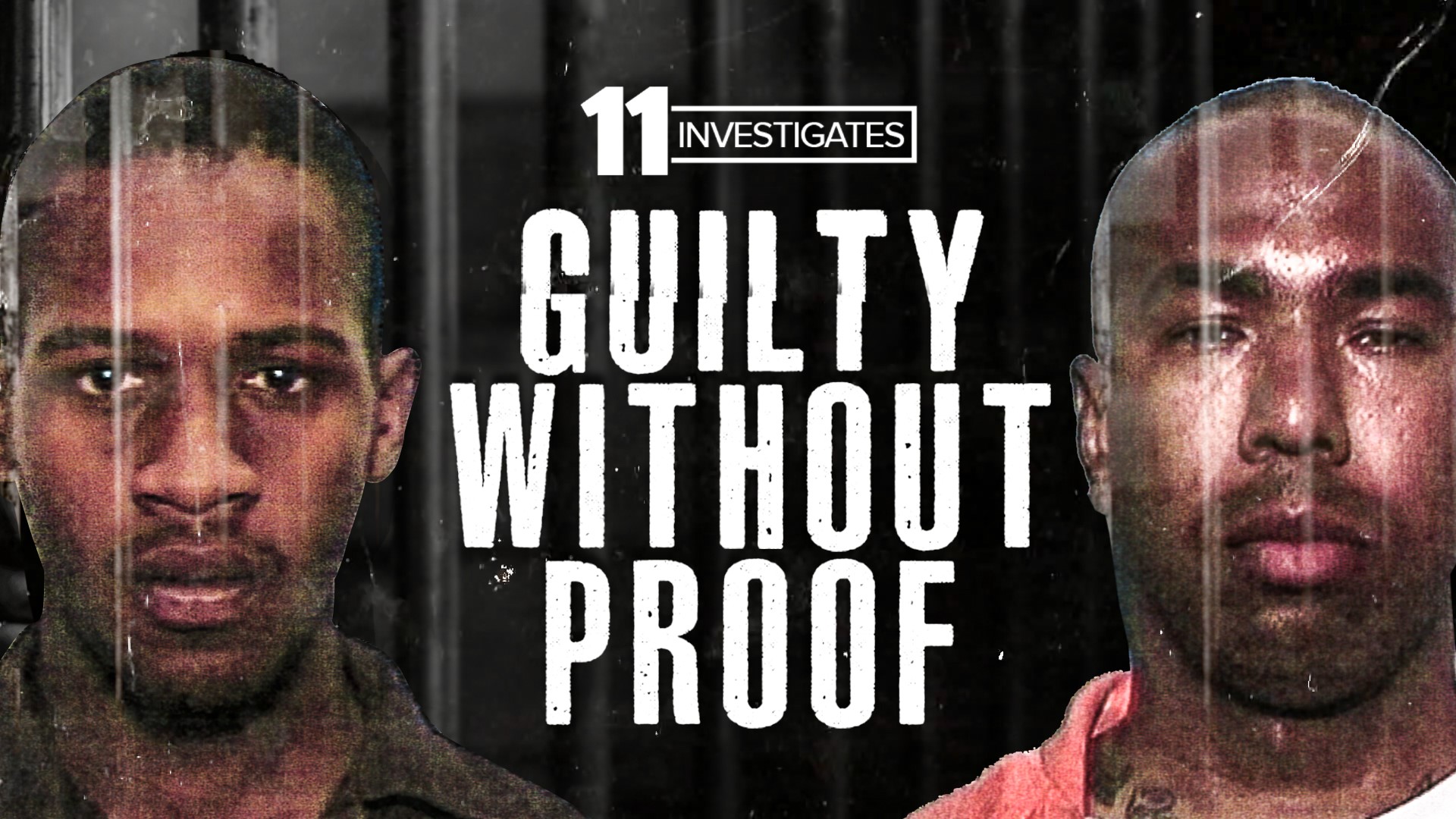
On June 15, 1998, 13-year-old Maurice Purifie was brutally murdered on Horace Street in central Toledo.
Maurice's body was found with one bullet in his chest and four in his head. It was a murder that was front-page news and shocked the city.
Wayne Braddy and Karl Willis were sent to prison in January, 2000, for the murder. To this day, they claim they had nothing to do with Maurice's killing.
On Aug. 14, 2019, 11 Investigates released "Guilty without Proof," my monthslong look into the murder and the innocence claims of Braddy and Willis. Because of the investigation, the Ohio Innocence Project has filed a motion seeking a new trial.
But, for now, Braddy and Willis remain in prison.


"Anger was one of my emotions," Braddy told me during an in-person prison interview. "I'd be telling you a bold-faced lie if I told you I wasn't angry."
The frustration is even deeper for Willis. COVID-19 has swept through the state prison system. Allen Correctional Institute had been largely spared until recently. But, as of Aug. 18, 59 prisoners and staff are currently infected. Willis has severe asthma and diabetes, putting him at higher risk of complications from COVID.
"Karl Willis is an innocent man," he told me during a trip to his prison last year. "I'm not responsible for Maurice's death."
Maurice Purifie was a well-liked kid. He had an easy smile, was quick with a joke, and could often be seen on the basketball court near Robinson Junior High.

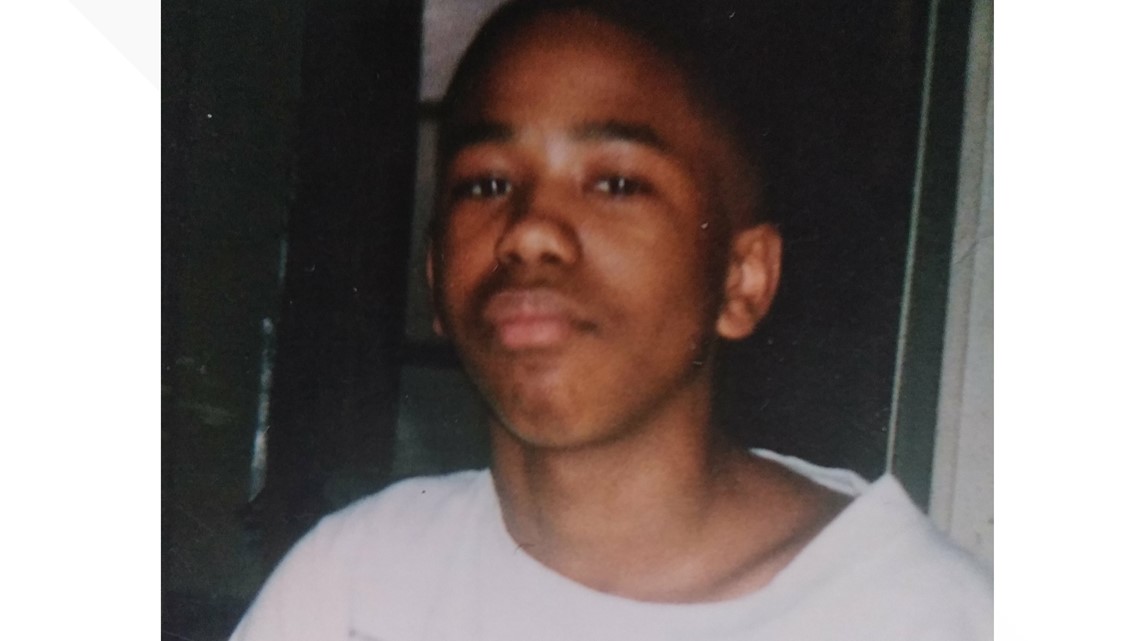
He left his girlfriend's home on West Woodruff Avenue in the early morning hours of June 15. He was discovered around 4 a.m. by two men returning from work. Responders initially thought Maurice may have been struck by a car, but when his body was turned over, bullet holes could be seen in his head.
His pockets were turned out and his shoes were beside his body. To detectives who arrived at the scene, it looked like a robbery, possibly drug-related because dealers will often keep money in their shoes.
There were no police records accusing Maurice of being a drug dealer, and multiple people told 11 Investigates that he would not have been involved in drugs. But a witness did say that Maurice could have been the person climbing out the window of a home on East London Square that was burglarized the night before Maurice's killing. Tare Lake lived at the home. At the time of the burglary, he was at an event with Aaron Pettis, police records show.

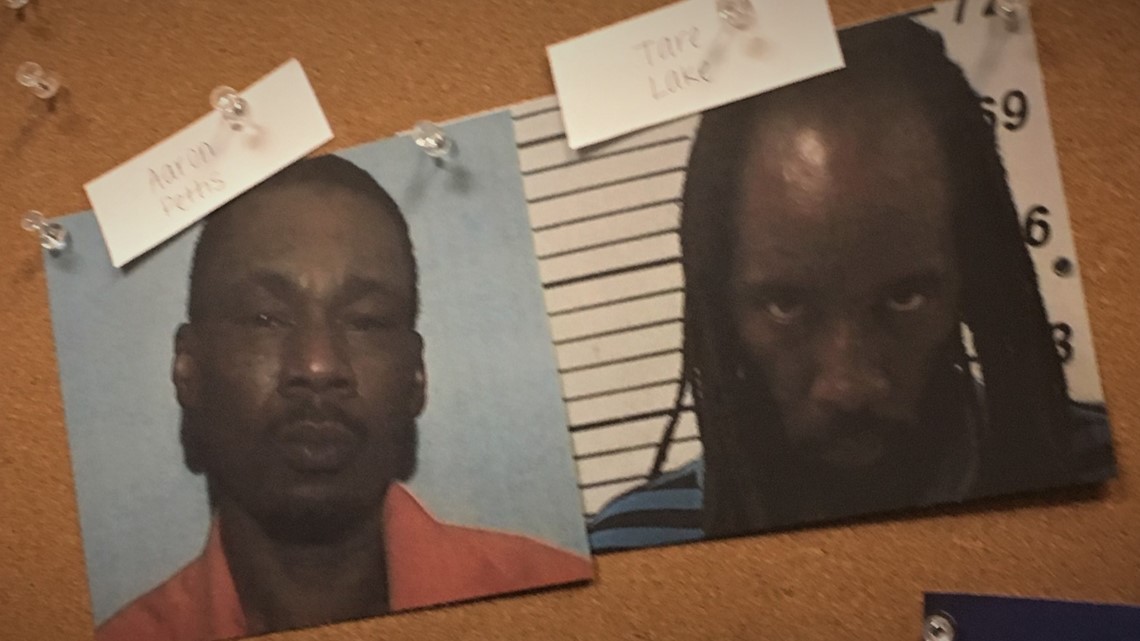
A day after the killing, a person called the tipline to say they overheard Pettis say he killed the teen. A later search warrant identified Lake and Pettis as the likely killers of Maurice, but they were ruled out after being interviewed and Pettis passed a polygraph.
Searching for Answers Searching for Answers
Karl Willis told me he begged the police and prosecutors to give him a polygraph.
I confronted lead prosecutor Andy Lastra with that information.
"Karl Willis asked to take a lie detector."
"Well, we were going to give him one," Lastra said.
"Well, why didn't you?"
"Sometimes we do, sometimes we don't."
"You gave Aaron Pettis a lie detector."
"I forgot about the one to Pettis."
LISTEN: ANDY LASTRA FULL INTERVIEW
There are no witnesses or any physical evidence against Braddy and Willis. In fact, clothes they were suspected of wearing the night of the killing were tested and no blood was discovered. According to what they told me, the men didn't even know Maurice, except from around the neighborhood.
Willis said he was shocked when the police came looking for him.
"I stepped out of my house and my brother said, 'What did you do? They looking for you.' I said, 'They can't be looking for me.' "
But then the police grabbed him.
It turns out that police said their big break came in early August 1998, when a caller said that Travis Slaughter had admitted to the killing.
The video of the interrogation of Slaughter was referenced in court, but the police and prosecutor initially could not produce it for 11 Investigates prior to the Aug. 14, 2019, report. But we knew that he had been interviewed for more than six hours and had changed his story multiple times. On an audiotape of a portion of the interview, Slaughter can be heard blaming Willis for the shooting: "Next thing I know, Karl Willis had a gun and was pulling the trigger," he said.

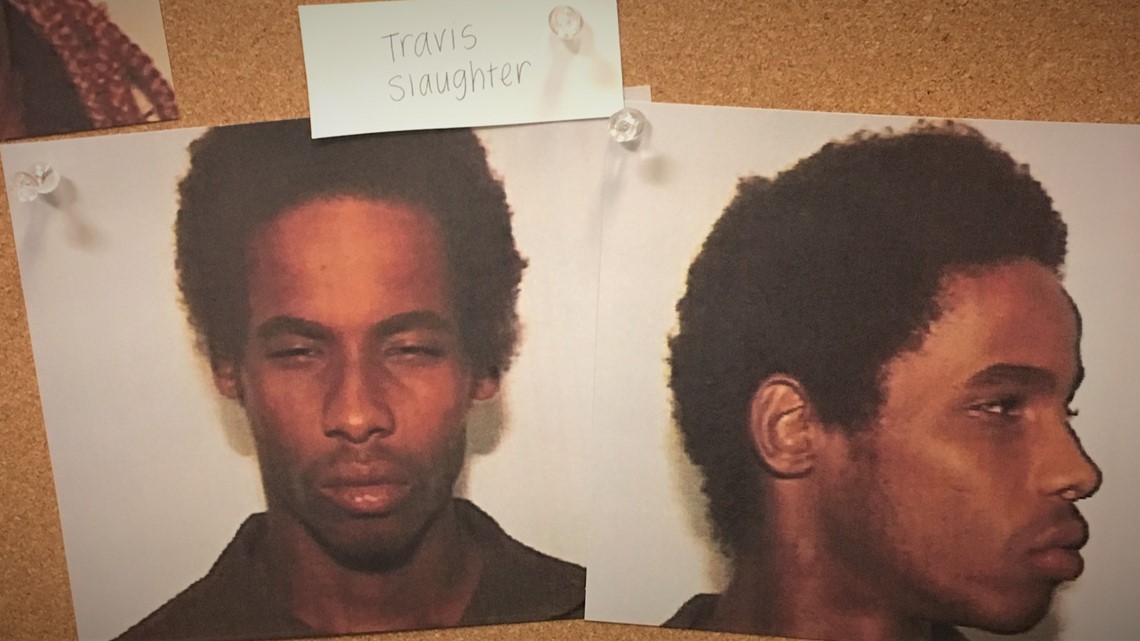
But with no other evidence, the grand jury refused to indict Braddy and Willis. It was only after prosecutors said they got cooperation from Slaughter's friend - Shondrea Rayford - that they were able to get an indictment.
During the trial, the state's only witness - other than experts - was Slaughter. He testified that Maurice owed him money and that he offered to pay Braddy and Willis if they would help him kill the boy. He admitted to shooting the boy once in the chest and then watched as Willis and Braddy passed the gun around, taking turns shooting Maurice in the head.
In return for his cooperation, the state cut a deal with Slaughter. The "mastermind" of the killing also had an unrelated rape grouped into a deal that allowed him to be released from prison in 2016.
During the trial, Rayford stopped testifying, was held in contempt of court, and was jailed for 30 days.

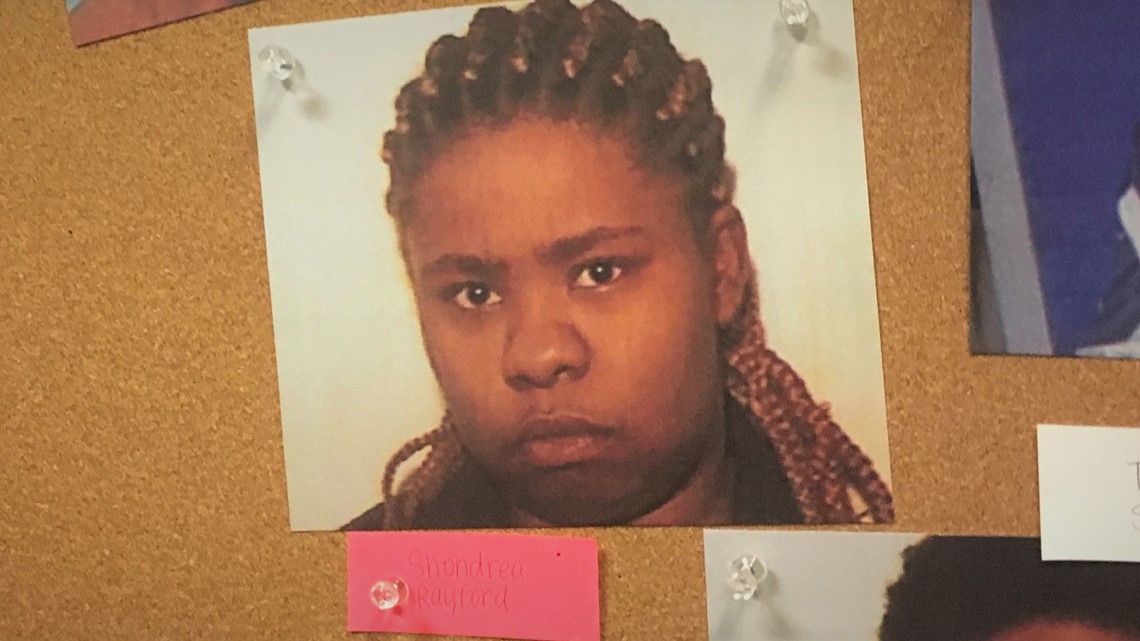
Her refusal to continue testifying made a big impact on the jury, even though Judge Judith Lanzinger told the jury that they could not consider her limited testimony.
"Sorry, you don't forget what you heard," jury foreman Jon Crye told me. "She was the only one who said they were all friends. It definitely hurt them."
The jury foreman told me that he was also frustrated by what he called the lack of defense.
Family members contacted by 11 Investigates said they were willing to provide alibis for the men. In Willis' case, his then-girlfriend said it was her birthday and Willis would not have been roaming the streets with Slaughter. He was babysitting with her, she said.
It is the same story that Willis told me, adding that he was trying not to go outside because his asthma was acting up.
But the defense called no family members, or Braddy or Willis, to the stand.
"There was no defense. That's probably why we found it the way we did," Crye said.
VIDEO: JURY FOREMAN JON CRYE FULL INTERVIEW
During my investigation, I discovered that Braddy's lawyer billed 8.8 hours for the entire investigation. I have spent hundreds of hours on this case.
After 26 hours of deliberations, the jury convicted Braddy and Willis on Jan. 7, 2000.
Both Slaughter and Rayford later provided affidavits to the Ohio Innocence Project, saying that Willis and Braddy had nothing to do with the killing. 11 Investigates also uncovered letters from Slaughter to the men while they were all in prison. In those letters, Slaughter professed remorse for lying on the stand.


Another inmate - and former Slaughter cellmate - called me to say that Slaughter had also admitted to him that he lied on the stand.
In 2017, the Ohio Innocence Project was able to get a hearing before Lucas County Common Pleas Court Judge Gary Cook. Rayford provided limited testimony, and Slaughter was a no-show, resulting in Judge Cook's decision to refuse to grant a new trial.
Fight for Tapes Continues Fight for Tapes Continues

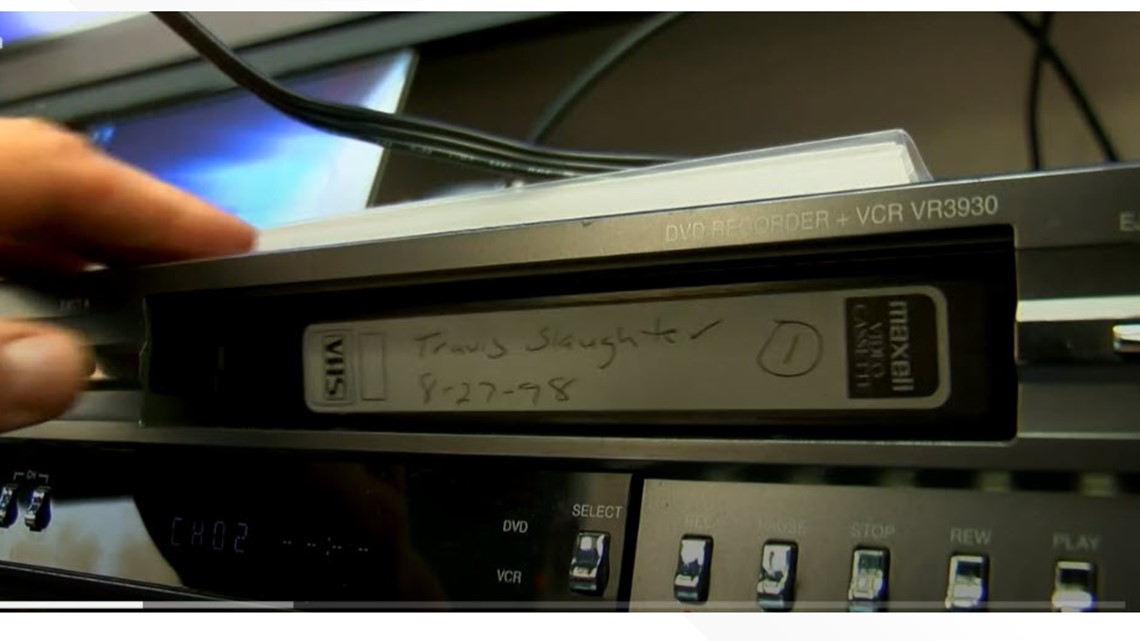
One thing that troubled me about the case was that there was a key period during the interrogation of Slaughter in which the man switched his story to implicate Braddy and Willis. The only details we had were from a detective's report and Detective Bart Beavers saying on that stand that there was not a detailed written report because it was all on video.
The Ohio Innocence Project did not have access to those videotapes during their earlier attempts. But after WTOL 11 had its lawyer get involved, the tapes were suddenly discovered, and they told a much different story than what was painted on the stand.

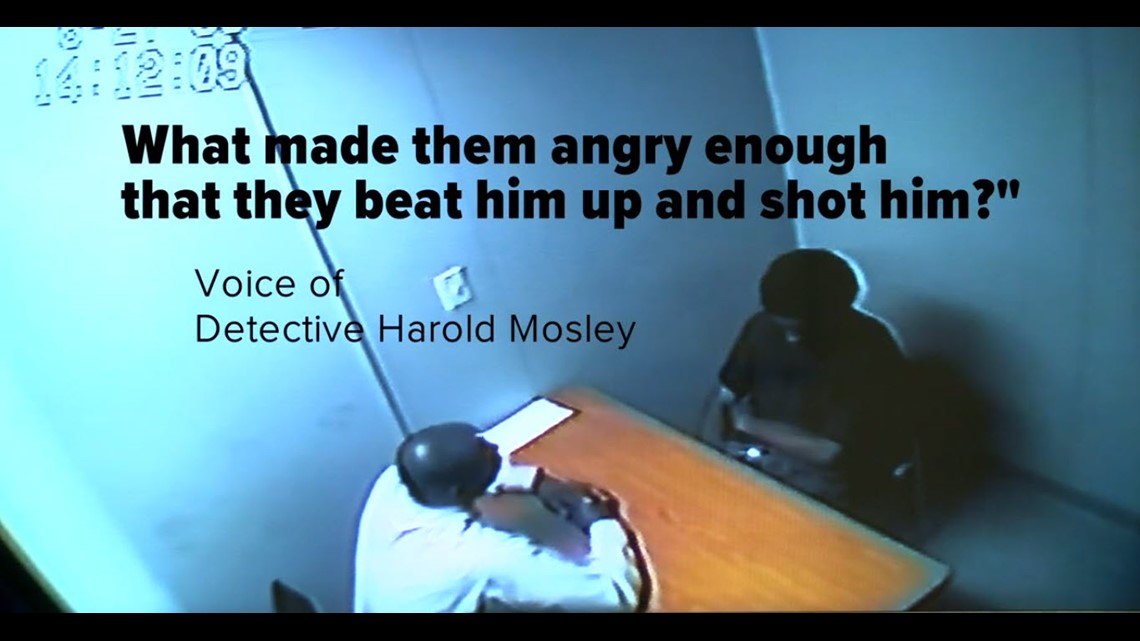
For more than five hours, a visibly distraught Slaughter denied knowing anything about the case, other than what he saw in the paper. In fact, he professed his innocence 25 times.
During the trial, the prosecution used the fact that Slaughter was seen praying on the tapes as evidence of his guilt. But what it didn't mention was that Slaughter could also be seen praying and telling God that "you know I had nothing to do with this."
After viewing the videos, I reached out to an interrogation expert, who asked not to be named in this article. He viewed the entire six-hour interview and determined that Slaughter was not being truthful with the detectives and that he eventually made up a story to try to get himself off the interview. It is the same conclusion that an expert for Slaughter's team reached before he cut a plea deal.
As the result of a public records request for Lastra's personnel file, I was also able to find a letter from Detective Beavers to Prosecutor Julia Bates, commending her team for accomplishing the "unthinkable" in convicting Braddy and Willis.

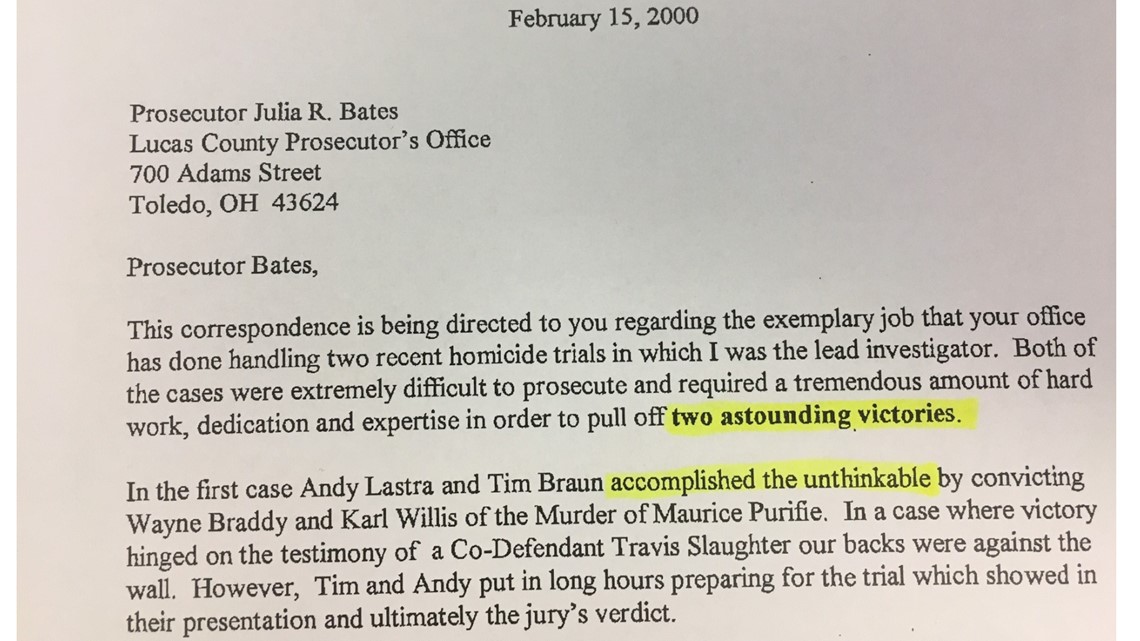
Rayford Comes Forward Rayford Comes Forward
It took weeks of building a relationship with Shondrea Rayford before I gained her trust. After several failed attempts, she finally agreed to go on camera with me after the airing of "Guilty Without Proof."
Grand jury testimony is not public, but Lastra told me that information from Rayford was key to getting an indictment from the grand jury on the second try. Rayford told me that she thought the information was that she had overheard a conversation between the three men about the murder. She denies knowing that information.
In an email to 11 Investigates in September, Lastra said the phone call was not the decisive statement.
"In August, 1999, the prosecutor's office had no knowledge of any such phone call. You will recall from the record of trial, that Shondrea Rayford told the then-victim/witness coordinator, Joan Coleman, about an alleged call during the trial, after Travis Slaughter testified and before she, herself, was called to the witness stand," Lastra said.
He added that Rayford admitted to having two conversations with Slaughter about his involvement in the killing.
"After the first conversation, she told police she was extremely angry because she did not want to believe Mr. Slaughter was telling her the truth. When he tried to talk about it a second time, she stopped the conversation and told him she didn't want to hear about it," Lastra said in his email.
But Rayford told me a much different story when she agreed to an interview in early September. She said anything she said was what police and prosecutors wanted her to say. .
“It was a story I knew nothing about, a story that the detectives made up. I never knew anything about the case until the detectives came up with the story. And then I was supposed to get on the stand and say something about something I didn’t know nothing about."
Lastra said the record indicates that Rayford told police and prosecutors a much different story.
Rayford described herself, in the interview with me, as a scared young woman who had never been in any kind of trouble. She told me that she was at work at a pharmacy when detectives showed up to question her.
She also claimed that she had multiple interviews with detectives and prosecutors and that Slaughter was also in those interviews.
Jury foreman Jon Crye told me that the jury believed that Rayford stopped testifying because she was afraid of Braddy and Willis. She told me that she wasn't afraid of them, that she believes that they are innocent and that she only stopped because she didn't want to lie on the stand.
Slaughter Seeks to Clear His Name Slaughter Steps Forward

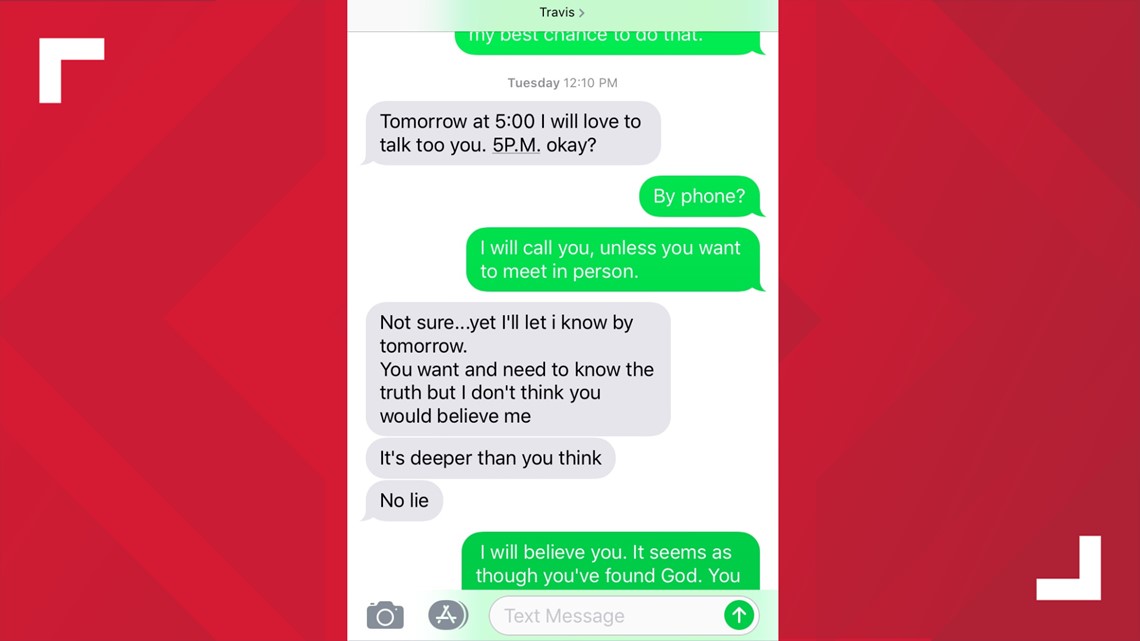
Before the airing of "Guilty without Proof," I made multiple attempts to find Slaughter. I knew that he was living in a halfway house in the Akron area. WTOL 11 photographer Eric Rerucha and I went to Akron, and I left a letter for Slaughter, asking him to tell me his story.
At one point, I encountered his pastor, who texted him. They texted back and forth, before Slaughter finally told him, "Tell them to PLEASE, PLEASE leave me alone."
But weeks after the report, Slaughter reached out to me, wanting to finally tell his story.
What he had to say was completely unexpected and, honestly, blindsided me. He said that not only were Braddy and Willis innocent but that he also had nothing to do with the killing.
"I was hungover. I was exhausted. I was hungry. I was tired, drained, and I just wanted out of there by any means necessary," Slaughter said.
VIDEO: FULL INTERVIEW WITH TRAVIS SLAUGHTER
But then he repeated a story that Braddy and Willis told me in separate interviews - that at the time of the murder, the men were not friends and that Slaughter was looking to get revenge on them.
According to all three men, the falling out happened in early June over Slaughter stealing clothes from them.
"They were fly, flyer than me at the time. So I was like, you know what? I want their clothes," Slaughter said. "That is 17-year-old thinking for you, adolescent thinking."
At some point, Braddy and Willis decided that they had had enough and confronted Slaughter in his home, forcing him to pay them for the clothes he had stolen. He said they took money that he planned to use to help his mom pay the rent.
After the fight, Willis said Slaughter showed up unexpectedly.
"He came to my mom's house. He was trying to get me to come into the alley. I told him, 'If you want to talk, we can talk right here.'"
In fact, Slaughter told me that he had a gun and was ready to kill Willis.
"I was highly upset. So when I was going to confront him, my intention was not to talk. My intention was to do him harm," Slaughter said.
The loss of Braddy's friendship was even more devastating to Slaughter. The two were like brothers, but Braddy said he was done with him.
"I told him we couldn't hang out like that no more," Braddy said.
Slaughter said he was determined to either kill them or get them back in some other way for embarrassing him in his mother's home.
"At 17 years old, I'm like, I'm going to get 'em," he said.
As he was being grilled by detectives, he hatched a plan to get back at his former friends.
"I felt like at that time that if I could say something to get the pressure off me, they'd go along with it," Slaughter said.
This story was recounted almost identically by three men who have not been able to speak to each other in 20 years. If true, it potentially blows a huge hole in the prosecution's case. At trial, the prosecution said that the men were partying together on the day of the killing, having sex with women, before later coming across Slaughter and killing him.
VIDEO: FULL INTERVIEW WITH KARL WILLIS
VIDEO: FULL INTERVIEW WITH WAYNE BRADDY
All of them said they were not friends at that point.
That set up the following exchange with Slaughter:
"Did you kill Maurice Purifie?" I asked.
"No, I did not kill Maurice Purifie."
"Were you with anyone who killed Maurice Purifie?"
"No, I was not."
"To the best of your knowledge, did Wayne and Karl have anything to do with the death of Maurice Purifie?"
"No, they did not. No, Wayne and Karl did not have anything to do with the death of Maurice Purifie."
And he also corroborated Rayford's statements that police and prosecutors coached them through what they needed to say to get a conviction.
He also explained why he did not show up for the 2017 hearing, saying that he believed that the prosecution would immediately grab him, invalidate his plea deal, and return him to prison for life.
Examining the plea deal, it is easy to understand why he might think that, but Lastra told me in our interview that they would not be able to prosecute Slaughter. It's a murky area, but they possibly could have when he did his first affidavit for the Innocence Project in 2002. However, that would mean that the prosecution would have to acknowledge that their lone witness was not being truthful.
'Guilty Without Proof' - 1 Year Later 'Guilty Without Proof' - 1 Year Later
On Monday, Aug. 17, 2020, the Ohio Innocence Project filed a motion, seeking a new trial. At this point, a lot of power rests in the hands of Prosecutor Julia Bates. She can agree to a hearing on a new trial, agree to a new trial, reopen the case, or simply drop the charges against Braddy and Willis.
I have tried to get a comment from her, but she has not spoken to me in close to a year and multiple recent requests for comment from the office have also gone unreturned.
However, the most profound result from the 11 Investigates report is the follow-up investigation on appointed counsel caps. While reviewing billing records from the Purifie case, I discovered that Willis' appointed attorney only billed $4,608 for his work and Braddy's attorney billed $2,952.
While talking about this issue to another local defense attorney, I was told about appointed counsel caps. State law mandates that each county is to establish appointed fee schedules. This lays out how much appointed counsel are paid per hour and a "cap" on how much they can bill for individual offenses. When it comes to aggravated murder, Lucas County appointed counsel fees are capped at $4,000, while other counties are capped at $15,000.

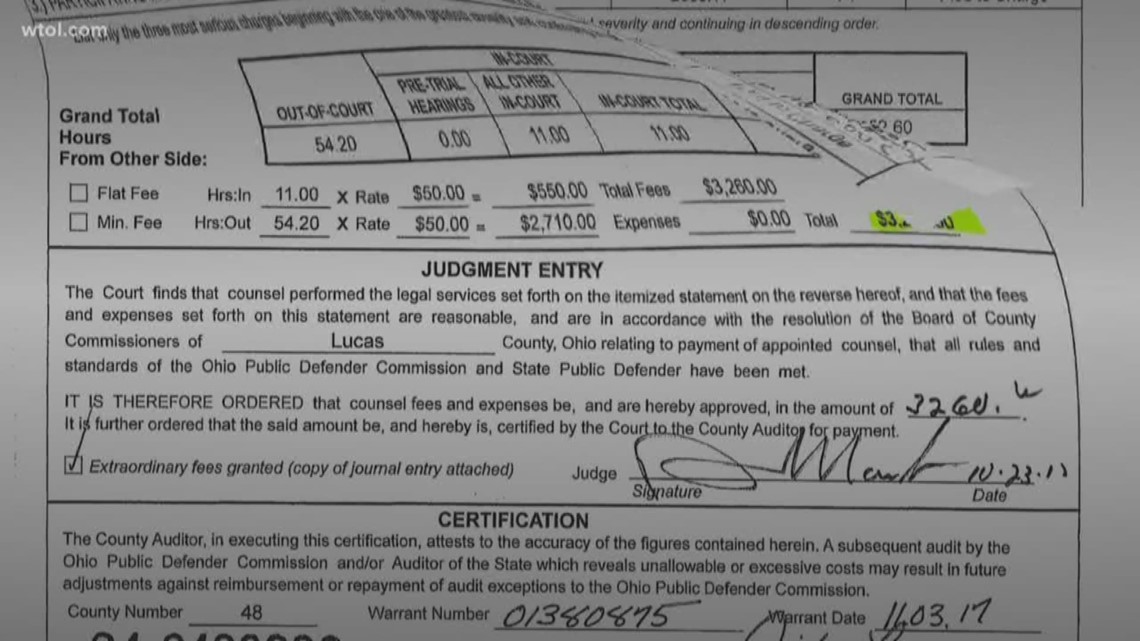
Most judges will grant "extraordinary expenses," but in a review of multiple murder and rape cases for Lucas County, I discovered that most attorneys stayed under the caps. It raised the obvious question of whether defendants could get better defense in Allen County than Lucas County.
Hourly rates were also dramatically different among counties. In some counties, it was as little as $35 an hour. In other counties, it was $75 an hour. In federal court, attorneys could bill more than $100 an hour. The result is that many of the best attorneys would not take appointed counsel cases.
The investigation resulted in changes to the appointed counsel schedules in multiple counties.
But the initial goal of "Guilty Without Proof" was to get Julia Bates to take another look at a case that appears to have numerous holes in it.
Jury foreman Jon Crye told me that the men deserve another chance.
"Reading back everything and seeing the things that have been recanted, I would like to see them get another chance."


